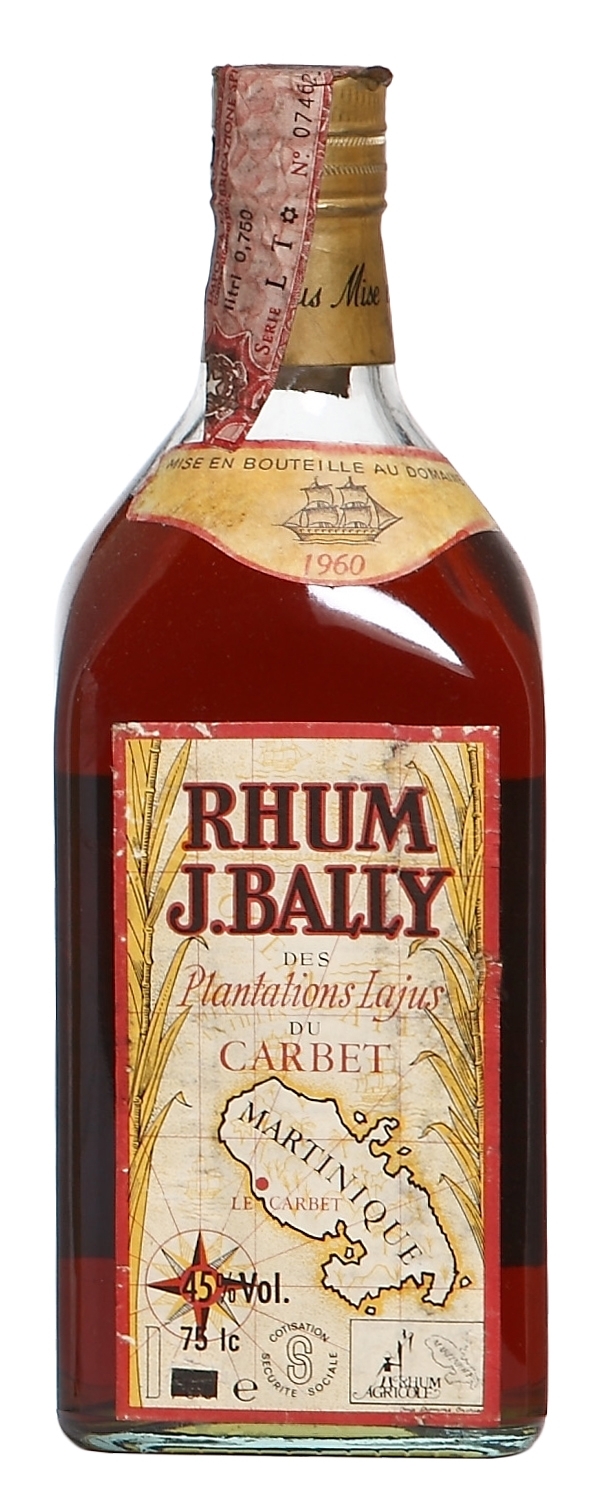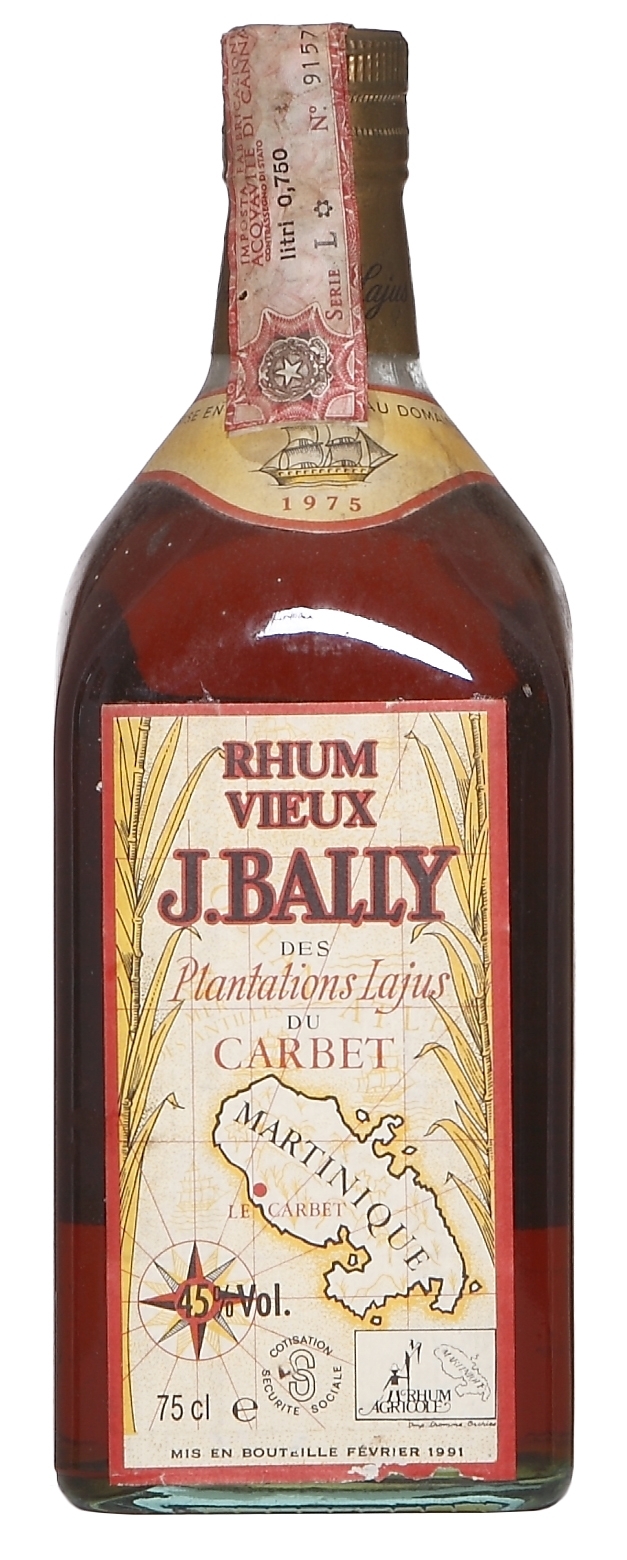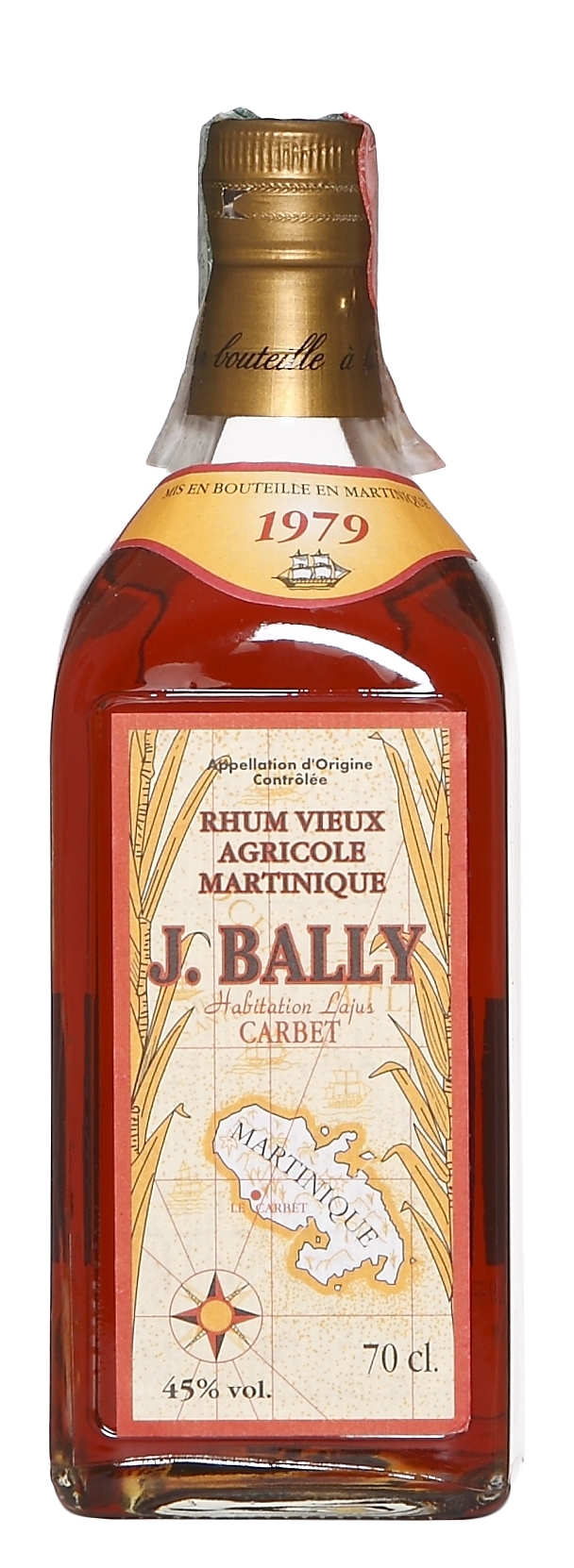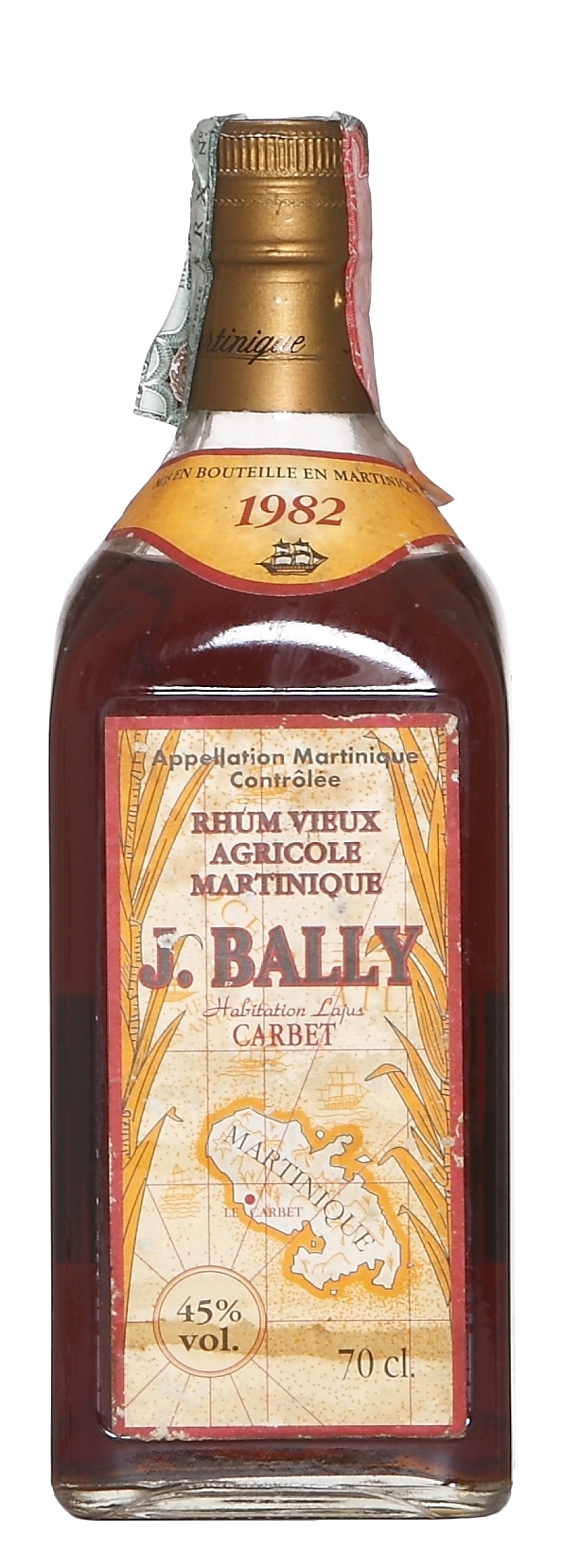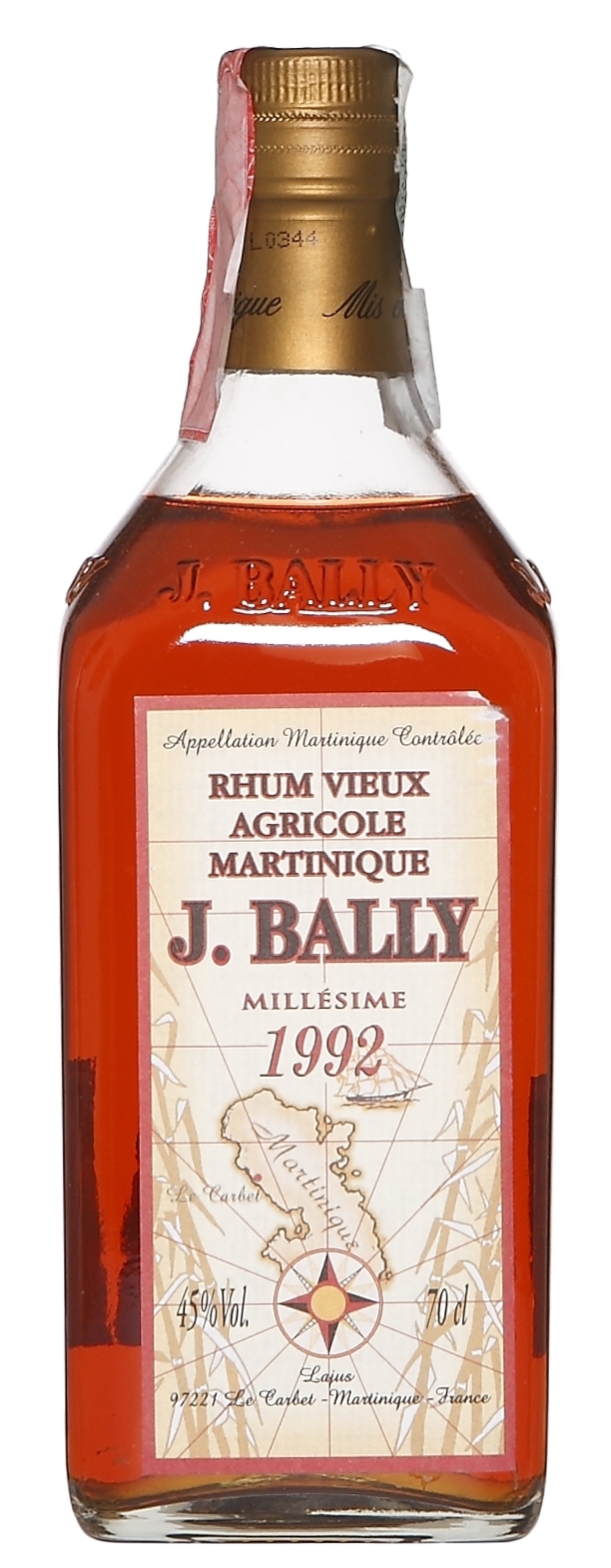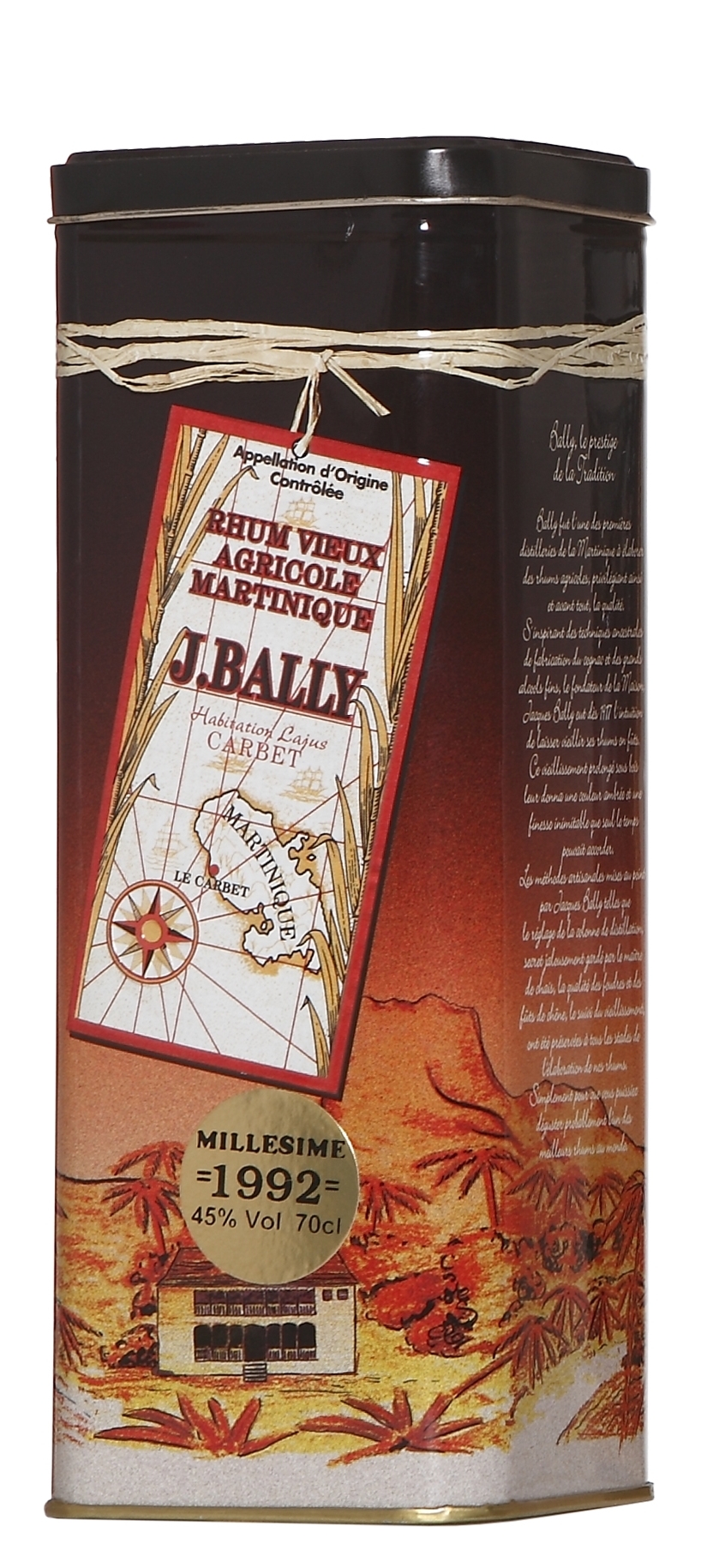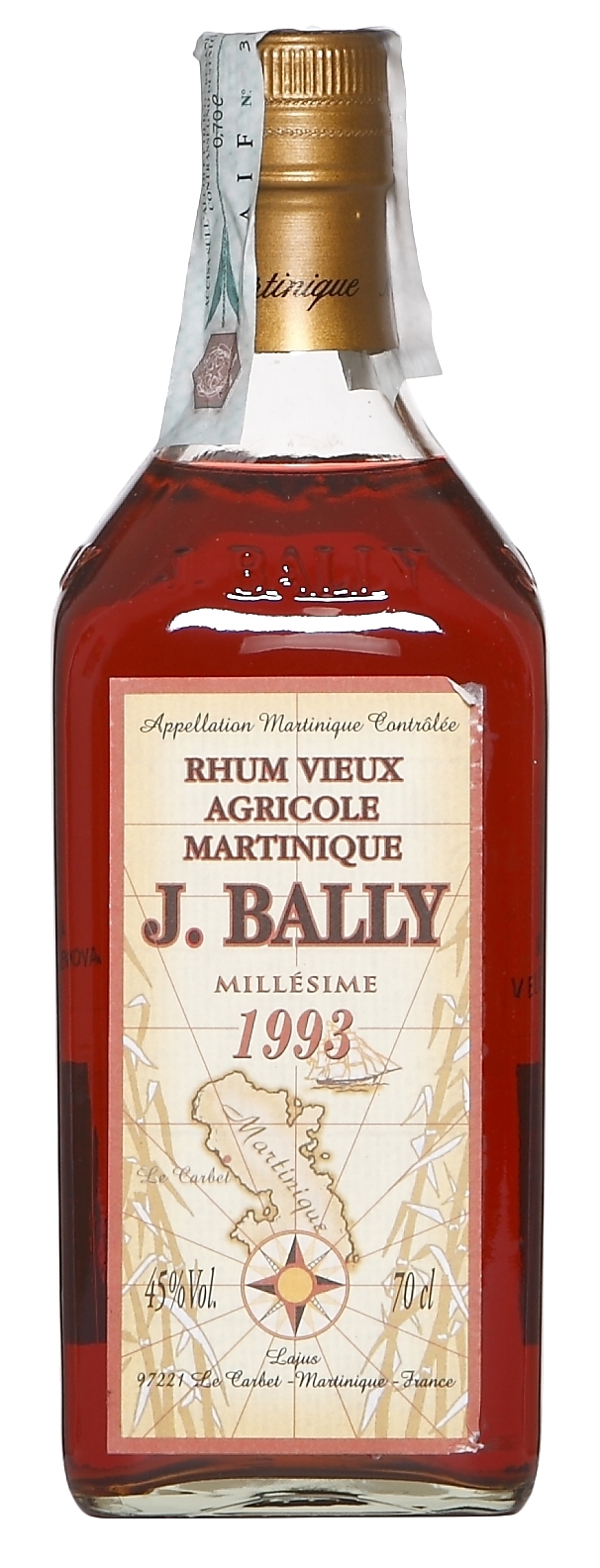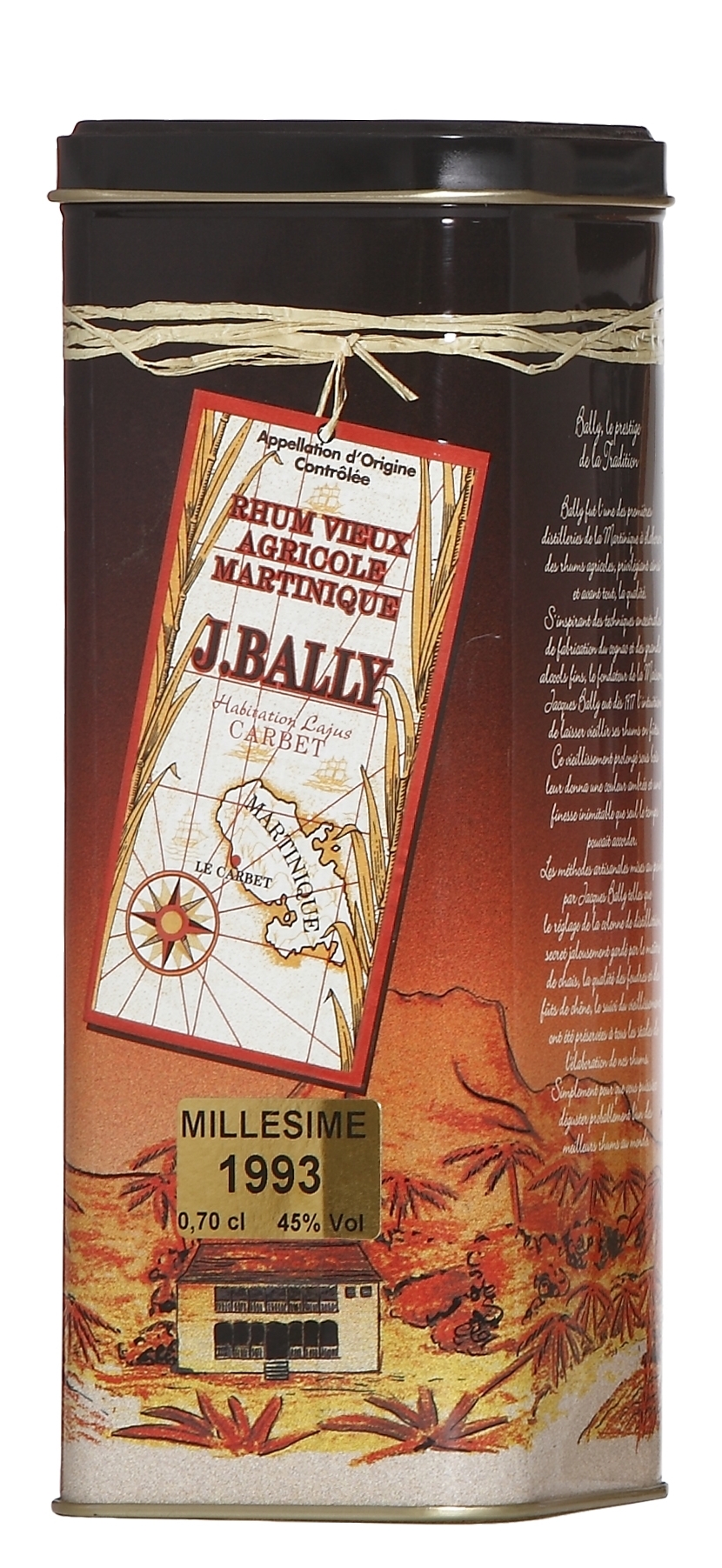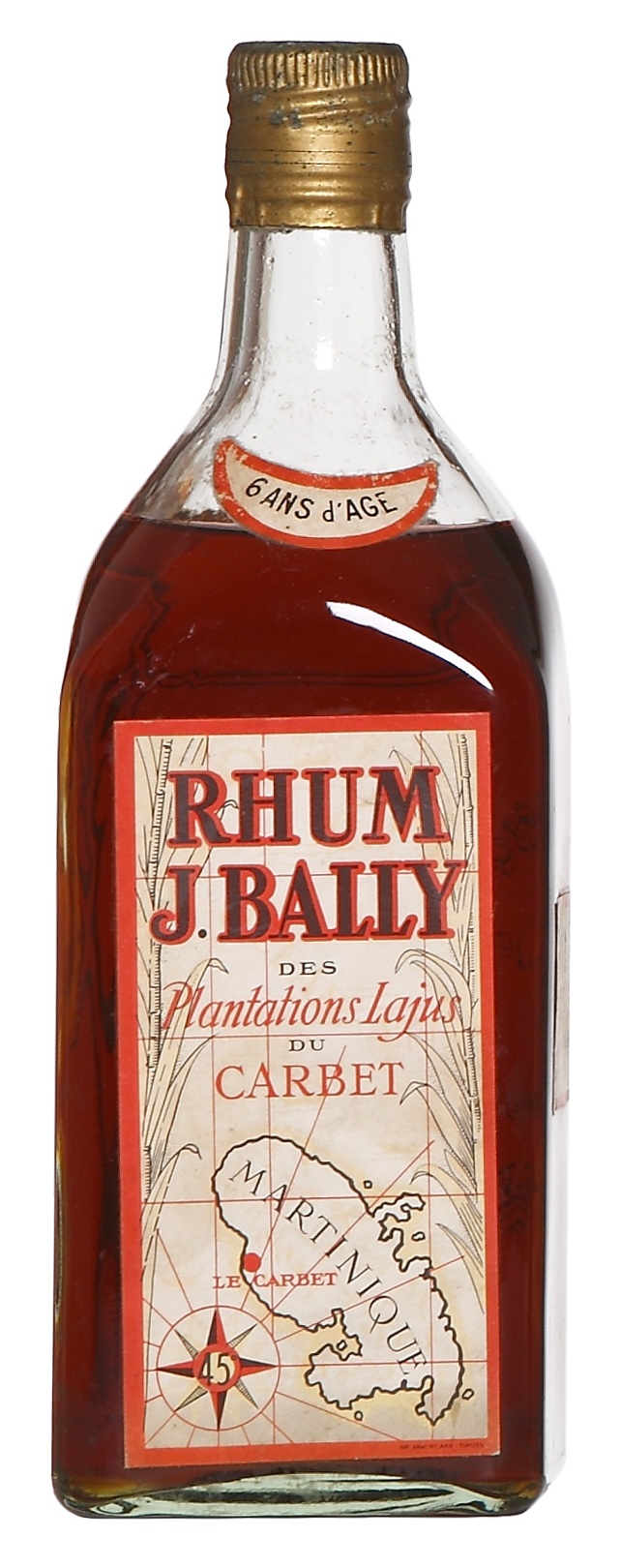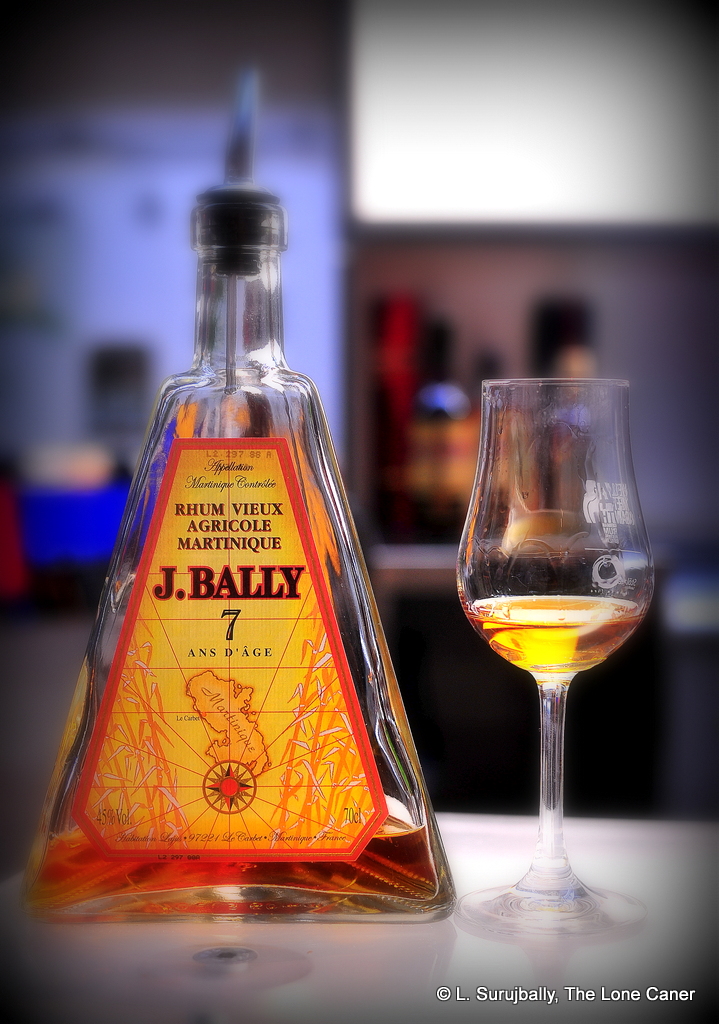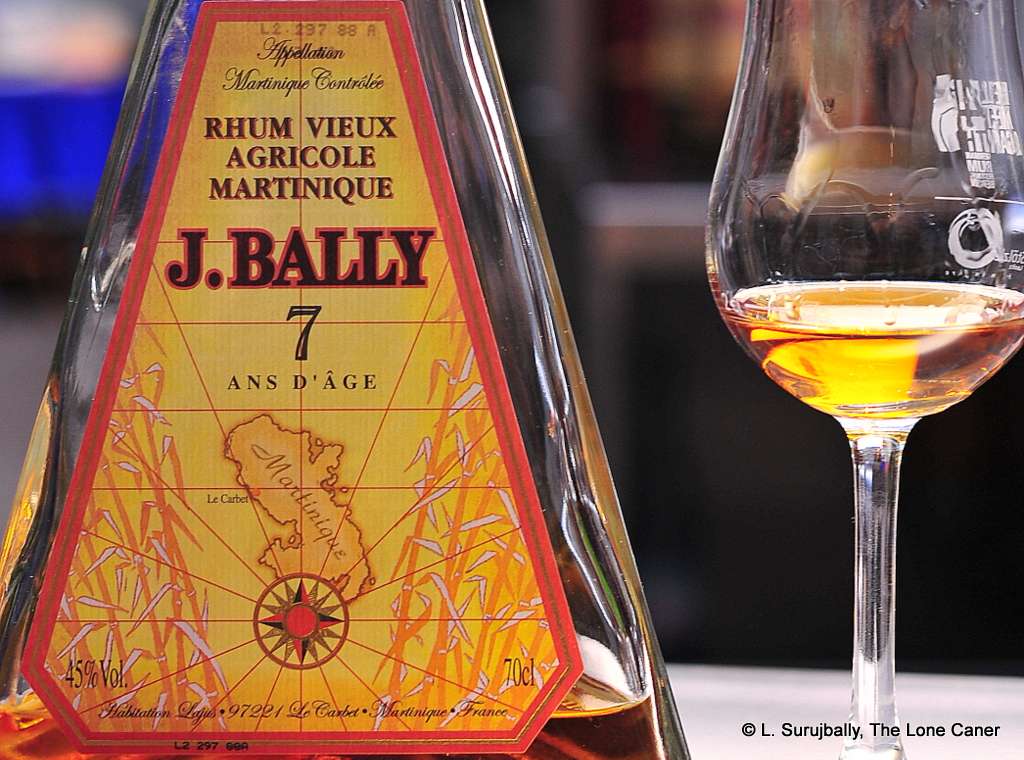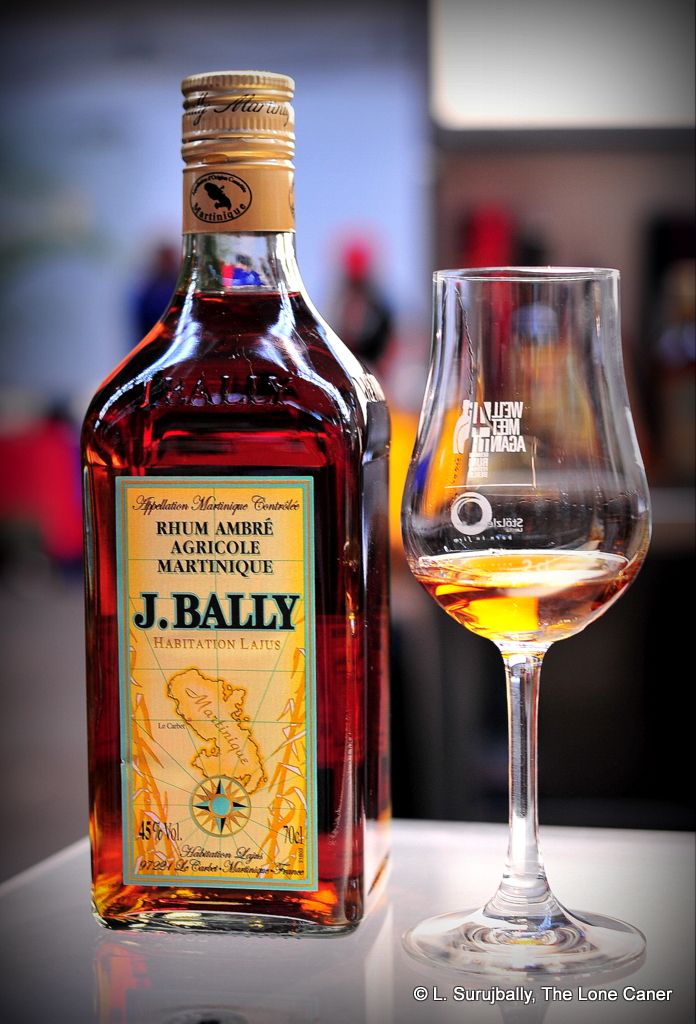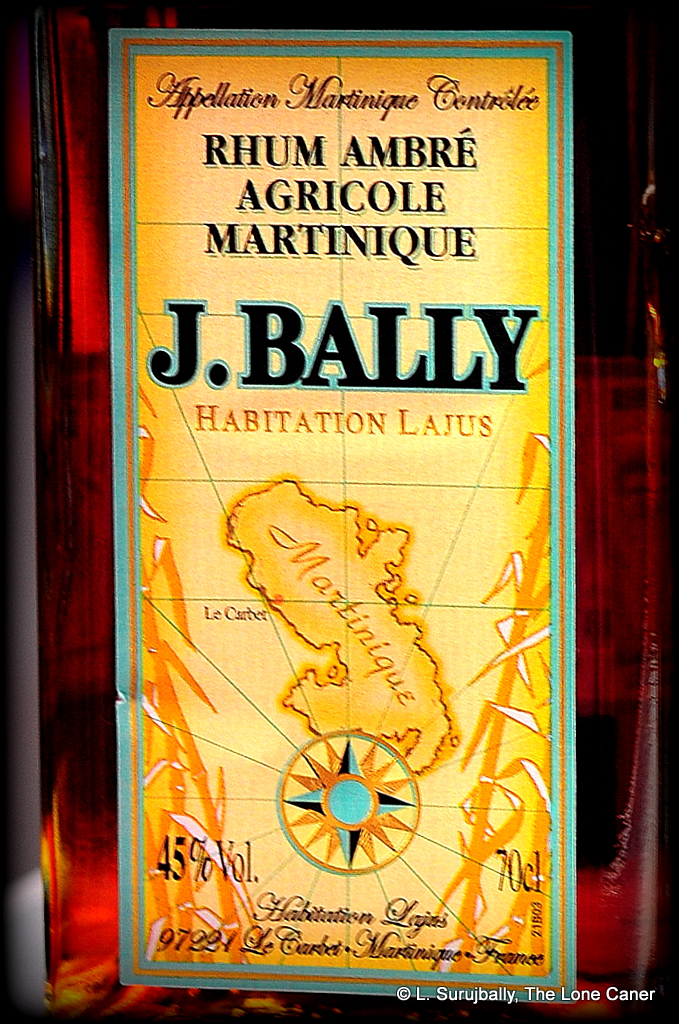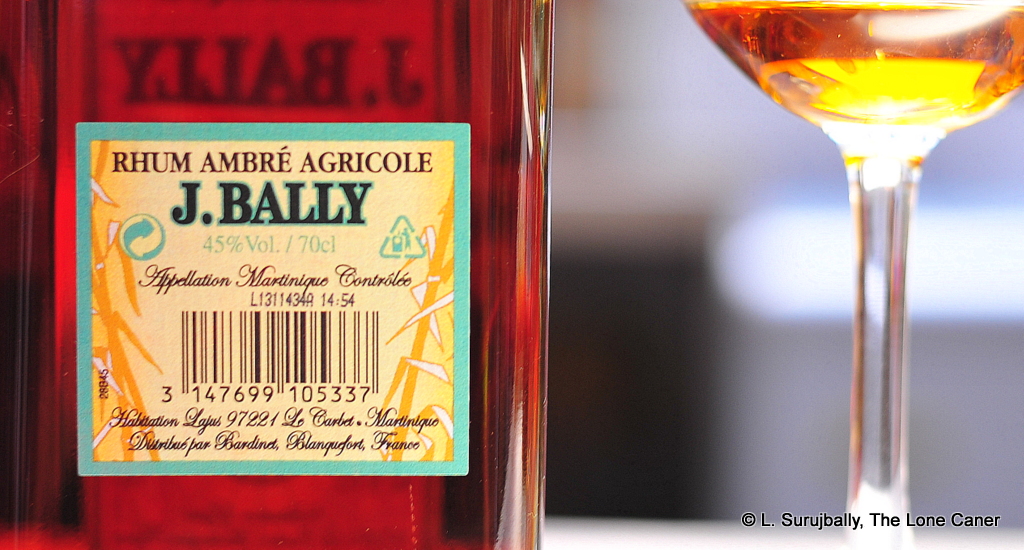As some of my previous reviews of white rums from North America have shown, I am not that enthusiastic about much of what passes for their idea of a white. Too often the juice for which we are asked to part with our money is a cheap multicolumn ethanol substitute trying to copy Bacardi’s famed profile – light, inoffensive, anonymous, meant only to disappear into a cocktail while erasing its own presence like a Cheshire Cat.
That said, there has always been indigenous white lightning made on village stills and small entrepreneurs all over the world, as well as the famed French island unaged agricoles. Because of the AOC designation there are rather more rules in play on these islands now, as opposed to the free-wheeling “anything goes” nature of, say, clairins. But I argue that since the quality of agricole rhums remains so high (at whatever age), this is not necessarily a bad thing.
What is unusual about J. Bally’s white rhum here, is the somewhat high strength of 55° – most agricoles tend to be around five degrees of proof lower (with some exceptions — like the Neisson L’Espirit 70° Blanc, or the A1710 Blanc at 66° or white rums from other islands). And of course there are always 40% ABV variations for the tamer export market.
The specs: it is very similar to the 50° Blanc which I’ve already looked at in Review #584. Like all Bally rums, it’s cane juice origin, AOC certified, just over half pure alcohol (55% ABV), and unaged (rested for a few months in stainless steel tanks before bottling). More cannot be said at this juncture, but that’s enough for government work.
 The exact rationale for issuing this rhum at all given how close in strength it is to its lower proofed cousin, is unclear – but it’s good, very good. The nose starts right out the gate with an intense salty and sweet grassy note, crisp green apples, a very light citrus line, with a pleasant herbaceous, even floral scent backgrounding the lot.
The exact rationale for issuing this rhum at all given how close in strength it is to its lower proofed cousin, is unclear – but it’s good, very good. The nose starts right out the gate with an intense salty and sweet grassy note, crisp green apples, a very light citrus line, with a pleasant herbaceous, even floral scent backgrounding the lot.
The palate is, I think, excellent, and the extra proof point gives it a sort of rough muscularity which works well. The sweet aromatic herbs return to do their thing and position it as a true agricole; there are figs, lychees, persimmons, dates and licorice in the foreground, while olives, sugar cane sap, peaches, damp aromatic wine-soaked tobacco and a sly hint of herbs like dill and cardamom bring up the rear. You can sense some pears in syrup and white guavas as well and it concludes with a firm and long lasting finish that it fruity, grassy, clear and crisp and brings a nice conclusion to the whole business
White rhums when made right are excellent to have on their own and are the closest thing to true terroire you can find – which is why it irritates me when garden-variety filtered plonk is positioned as some kind of elixir of the gods in advertising materials. People who swear by lightly aged, filtered whites have good reasons for liking and endorsing them: but such rums do not have a tenth of the character possessed by a single well-made agricole … such as this one.
What’s interesting about this edition of the Bally blanc series of rhums, is that the tasting notes are so similar to the others, like the 40° and 50° – it’s almost like they took the strong stuff off the still and just progressively diluted it (although I stress that there’s no evidence fort this at all, it’s just my supposition…and they may indeed be made with slight variations for each). But even with that similarity, there is enough intriguing originality here, enough of a snap-crash-bang, to set the stronger version above its cousins. If I had a choice, this is the one I’d buy.
(#1083)(87/100) ⭐⭐⭐⭐
Other Notes
Historical Background (adapted from Review #552)
Bally was named after Jacques Bally, a graduate of a top engineering school in Paris, the Ecole Centrale des Arts et Manufactures (ECP, founded in 1829) – he snapped up the Lajus Plantation on Martinique in 1917, a mere fifteen years after Mount Pelee erupted, when memories of that disaster were still fresh and land prices were cheap (Lajus, founded in 1670, was already in foreclosure, having gone bankrupt after the 1902 disaster). By 1920 he had installed new steam engine, fixed up the salvageable equipment he could and (legend has it) pretty much built his own column still from scratch.
In that same year the nearby Habitation Dariste owned by the the Gronier family went bankrupt and Bally bought it in 1923 and moved the distillery equipment to Lajus to augment his own machinery. In 1930, by which time he was already laying away rum stocks to age, he also had a hand in designing the signature pyramidical and square bottles which became so associated with Bally in later years. The rhums Bally made were very popular, sold well, and the company remained in business until the 1980s when Remy Cointreau acquired it, at which point production was shut down at Lajus and moved to Domaine du Simon where (as far as I know), it’s still being made, with cane from Lajus. Note that in 2003 La Martiniquaise bought out Saint James and Bally (to add to their rum portfolio which already contained the brands of Depaz, Dillon, Negrita and Old Nick) which is why the Remy Cointreau’s webpage makes no mention of either one now and why, in Modern Caribbean Rum, Matt Pietrek locates Bally as a brand in the section under St. James.
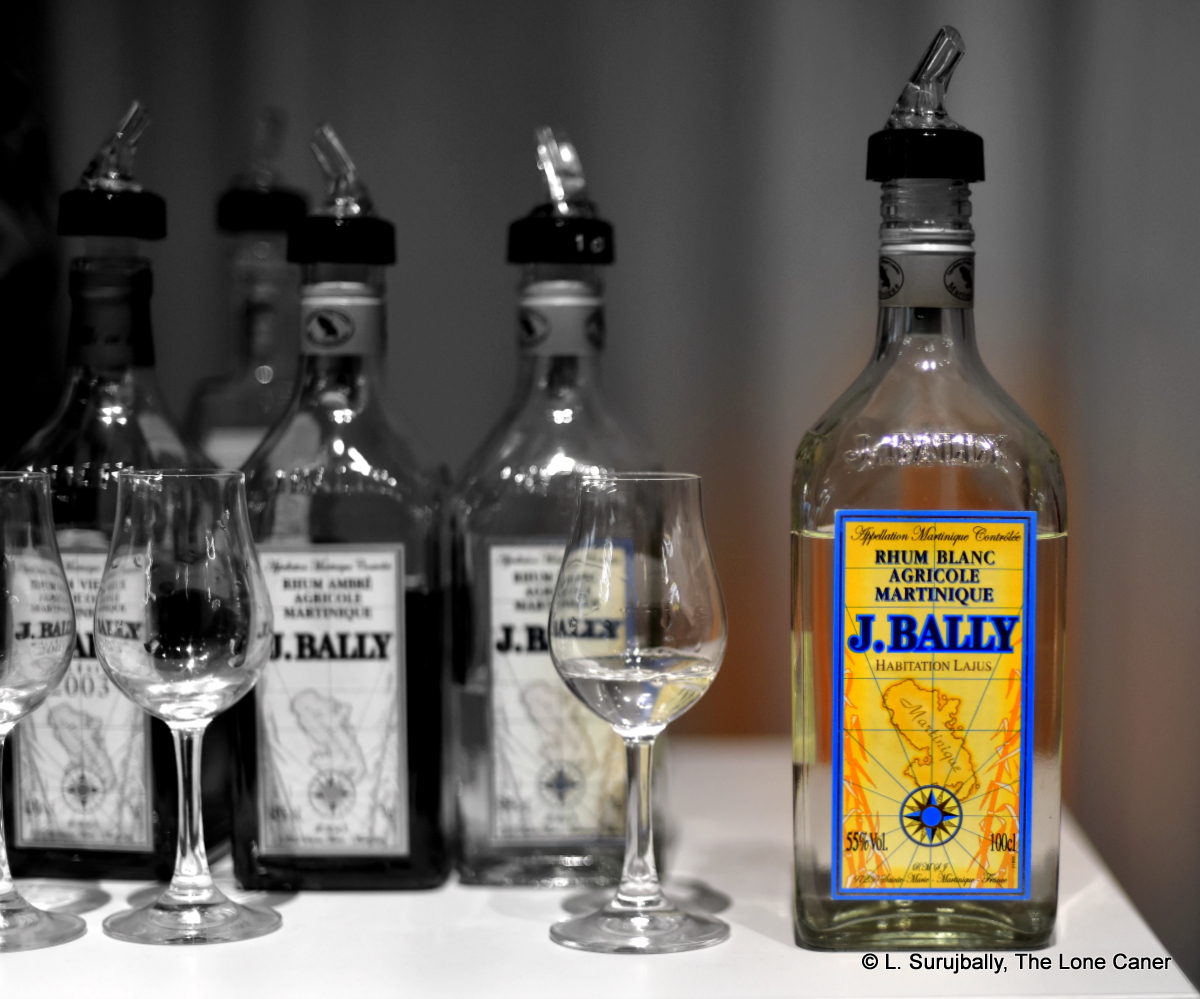
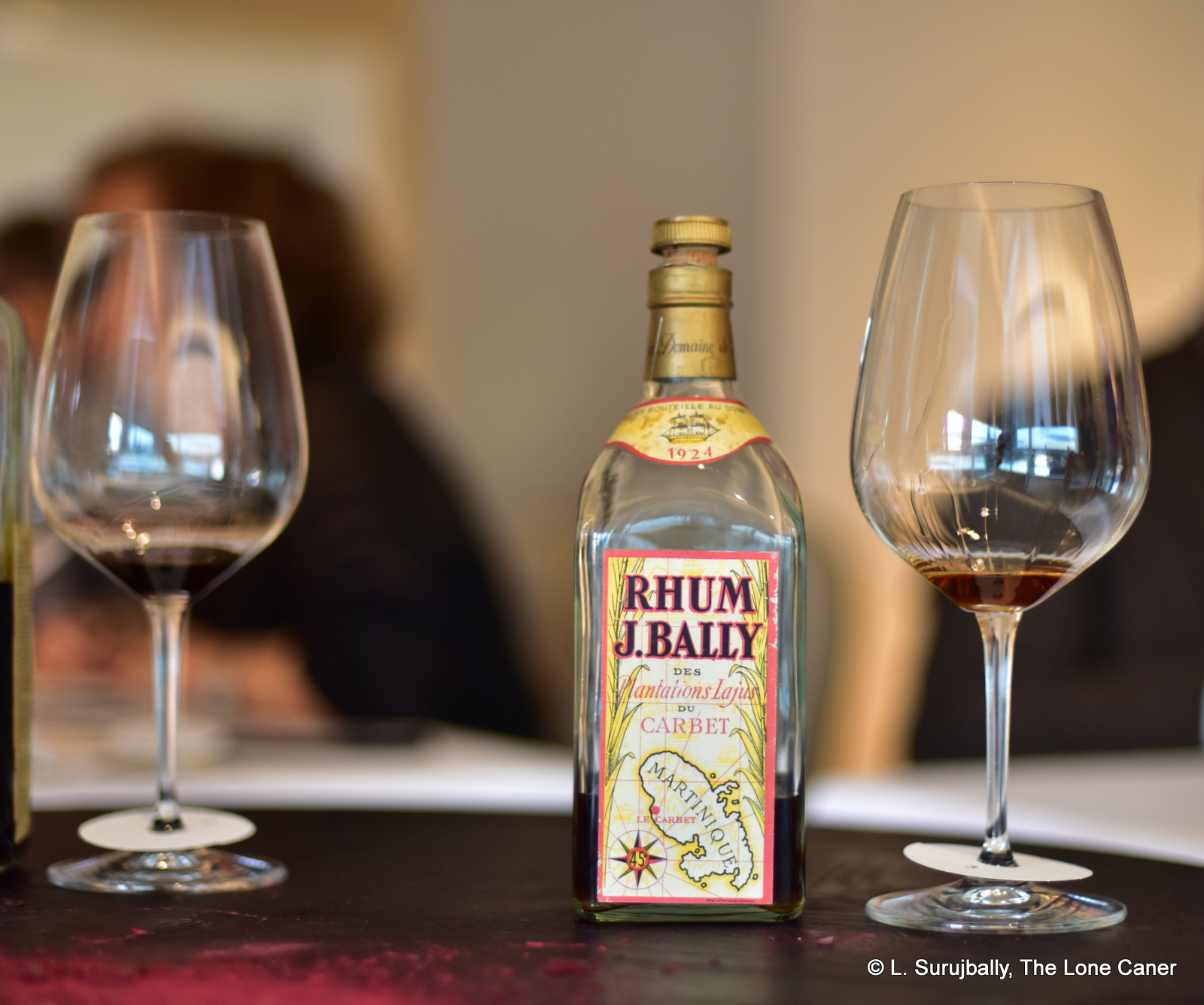
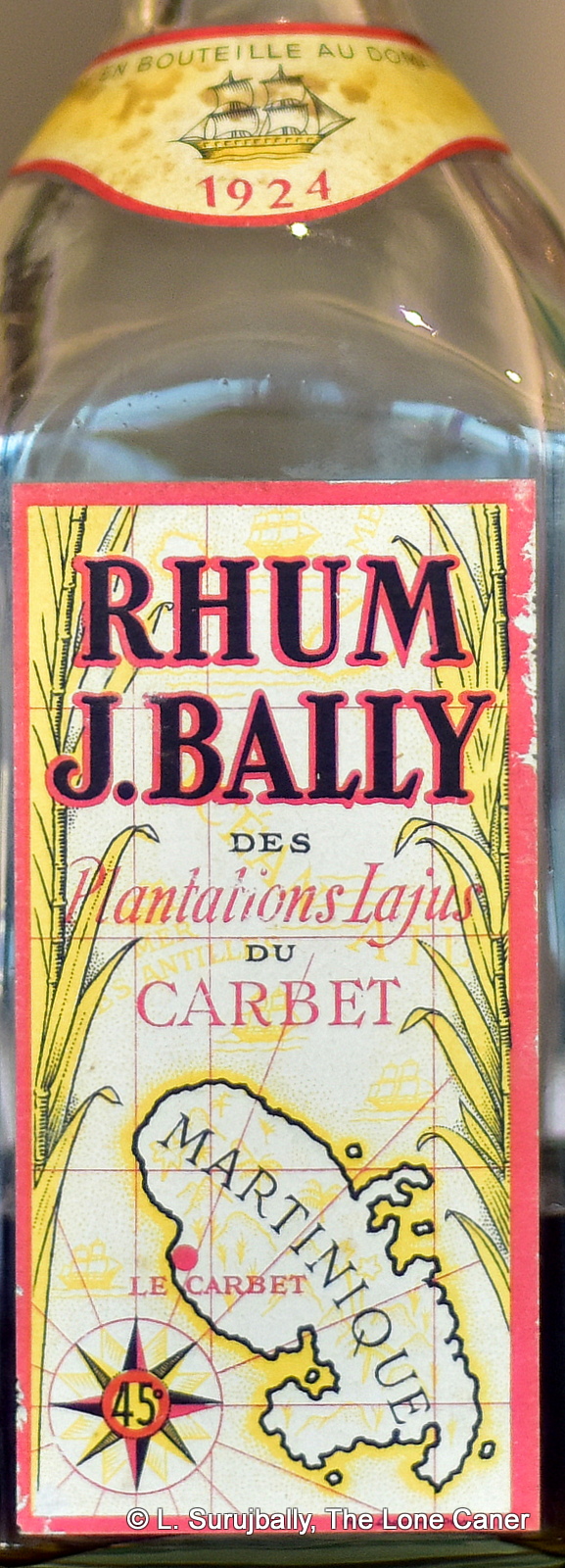 Aside from being made so long ago, what makes the 1924 special is that it was the initial release of an aged rhum from Bally, and one of the first of its kind in the French West Indies, if not
Aside from being made so long ago, what makes the 1924 special is that it was the initial release of an aged rhum from Bally, and one of the first of its kind in the French West Indies, if not 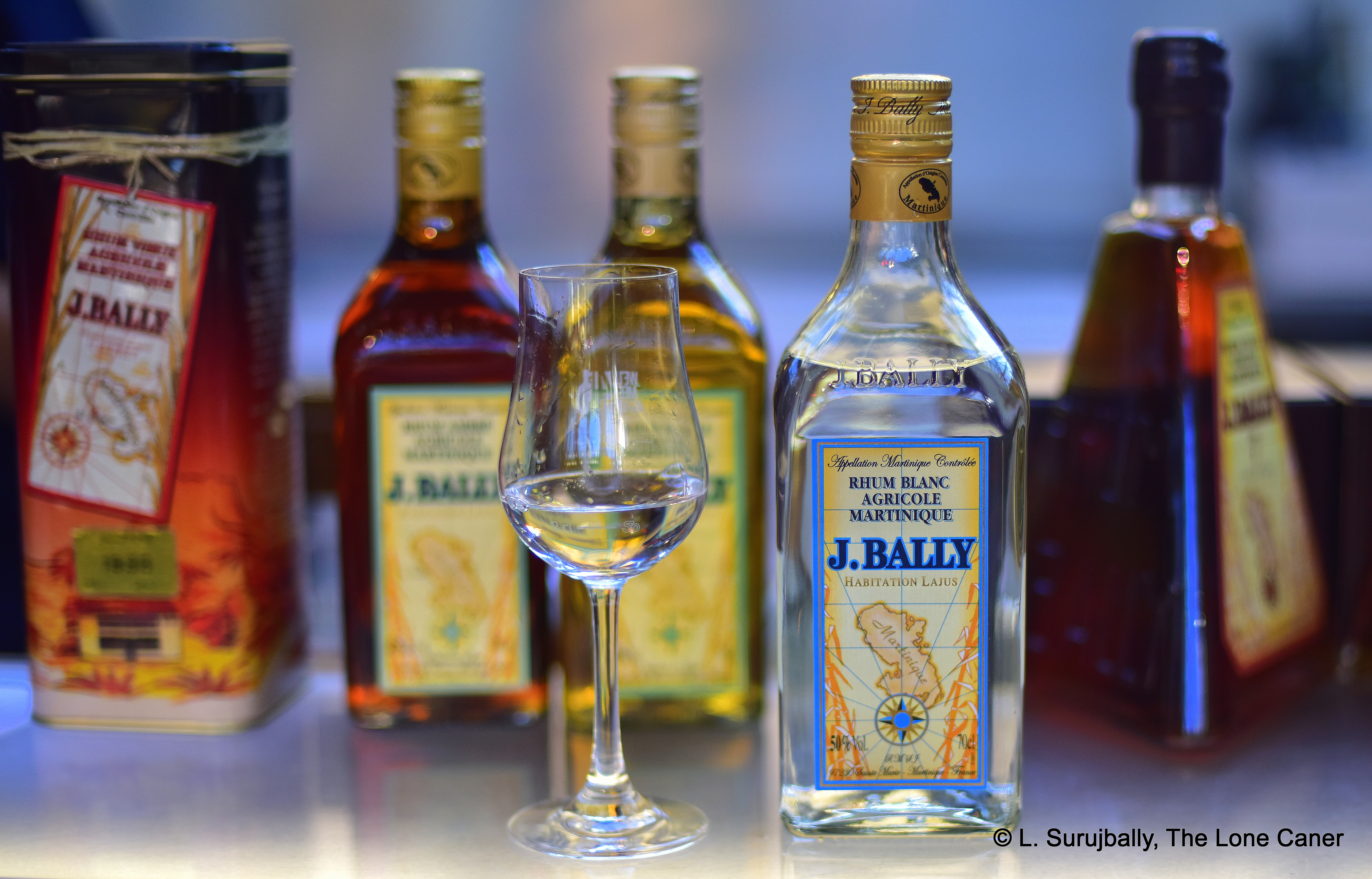
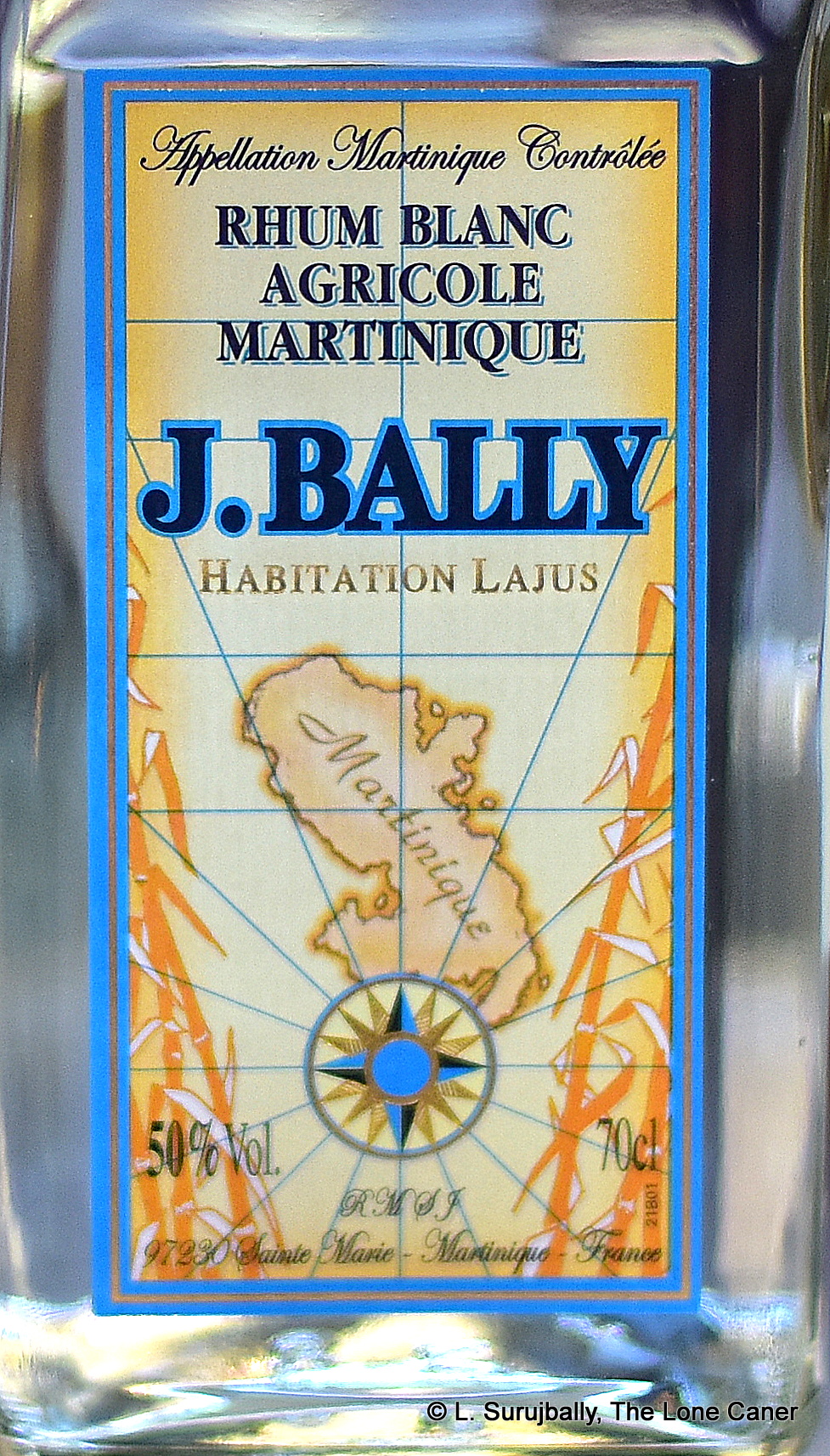 Well, that out of the way, let me walk you through the profile. Nose first: what was immediately evident is that it adhered to all the markers of a crisp agricole. It gave off of light grassy notes, apples gone off the slightest bit, watermelon, very light citrus and flowers. Then it sat back for some minutes, before surging forward with more: olives in brine, watermelon juice, sugar cane sap, peaches, tobacco and a sly hint of herbs like dill and cardamom.
Well, that out of the way, let me walk you through the profile. Nose first: what was immediately evident is that it adhered to all the markers of a crisp agricole. It gave off of light grassy notes, apples gone off the slightest bit, watermelon, very light citrus and flowers. Then it sat back for some minutes, before surging forward with more: olives in brine, watermelon juice, sugar cane sap, peaches, tobacco and a sly hint of herbs like dill and cardamom.